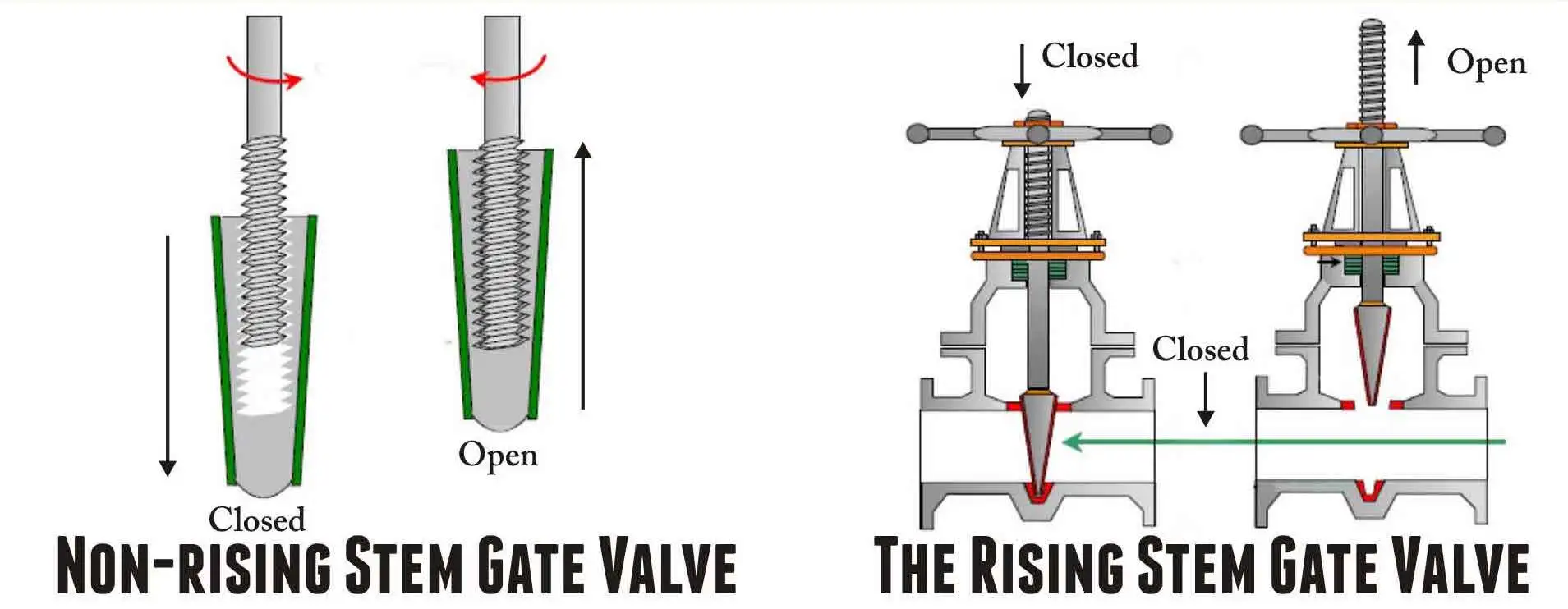Gate valves are widely used for all types of applications and are suitable for both above-ground and underground installation. Not least for underground installations it is paramount to choose the right type of valve to avoid high replacement costs.
Gate valves are designed for fully open or fully closed service. They are installed in pipelines as isolating valves, and should not be used as control or regulating valves. Operation of a gate valve is performed doing an either clockwise to close (CTC) or clockwise to open (CTO) rotating motion of the stem. When operating the valve stem, the gate moves up- or downwards on the threaded part of the stem.
Gate valves are often used when minimum pressure loss and a free bore is needed. When fully open, a typical gate valve has no obstruction in the flow path resulting in a very low pressure loss, and this design makes it possible to use a pipe-cleaning pig. A gate valve is a multiturn valve meaning that the operation of the valve is done by means of a threaded stem. As the valve has to turn multiple times to go from open to closed position, the slow operation also prevents water hammer effects.

Gate valves with rising stems
Turn the hand wheel to raise or lower the valve plate connected to the valve stem by the movement of threads of hand wheels, achieving the purpose of opening and closing.
Advantages of gate valves with rising stems are as follows:
Gate valves with rising stems have small fluid resistance, and their sealing surfaces are less scoured and corroded by the medium.
Gate valves with rising stems can be opened or closed with less strength.
The flow direction of the medium is not restricted.
Gate valves with rising stems have simple shapes, short structure, good manufacturing process and wide range of applications.
Disadvantages of gate valves with rising stems are as the following:
Scouring and scratches easily occur between the sealing surfaces, which are difficult to repair.
The overall size is relatively large; a certain amount of space is required for opening, and the opening and closing time is long.
The structure of gate valves with rising stems is more complicated.
Gate valves with rising stems
The valve stem's nut is set on the valve plate. The rotation of the handwheel drives the valve stem to lift the valve plate. Usually there is a trapezoidal thread at the bottom end of the valve stem. The thread at the bottom end of the valve and guide groove on the disc will change the rotational motion to rectilinear motion, that is, the operating torque is changed to the operating thrust.
When the valve is opened and the lift height of the plate is equal to the valve diameter, the fluid passage is completely unblocked. However, this position cannot be monitored when the valve is in operation. In actual use, the apex of the valve stem is used as a mark, that is, the position where the valve cannot be opened, as its fully open position. To prevent the valve from being stuck due to temperature changes, when the stem is at the top position, make the stem turn back 1/2 to 1 thread as its fully opened position. Therefore, the fully opened position of the valve is determined by the position of the valve plate, that is, the stroke.
The advantage of this structure is that the height of the gate valve always remains the same, resulting in installation space being small, which is suitable for gate valves with large diameters or restricted installation space. Gate valves with this kind of structure must be equipped with an opening and closing indicator to indicate the degree of opening and closing. The disadvantage of this structure is that the valve stem's thread not only is unable to be lubricated, but it is directly corroded by the medium, causing damage easily.
Gate valves with rising vs non-rising stem design
Rising stems are fixed to the gate and they rise and lower together as the valve is operated, providing a visual indication of the valve position and making it possible to grease the stem. A nut rotates around the threaded stem and moves it. This type is only suitable for above-ground installation.
Non-rising stems are threaded into the gate, and rotate with the wedge rising and lowering inside the valve. They take up less vertical space since the stem is kept within the valve body. JONLOO offers gate valves with a factory-mounted indicator on the upper end of the stem to indicate the valve position. Gate valves with non-rising stems are suitable for both above-ground and underground installations.
The majority of JONLOO's range are designed with rising stem, but we also offer gate valves with non-rising stem

